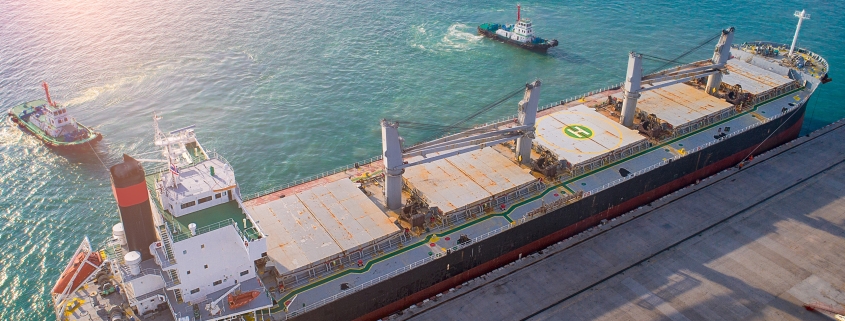Section 301 tariffs update: The elephant stirs
By Gary Williams, SSGA Director of Transportation & Regulatory Affairs
In a favorable turn based upon hearing and considering comment on the initial proposal set forth by the U.S. Trade Representative (USTR), a revision was released April 17 noting a summary of comments made, and the resulting change in proposal for Section 301 tariffs regarding ship build.
Among these:
- A shift from a flat fee mechanism to a net tonnage basis for any China-built ship starting at $0 from Oct. 14, 2025, increasing to $50 per net ton after 180 days, and increasing thus on an annual basis for three years (or the higher of this or a per container fee).
- Now, only the first port of entry will result in a charge being levied instead of a charge at each port stop on a route. This would have meant ports such as Oakland were likely to get dropped and predicted high congestion at ports such as Los Angeles.
- Any such fee on a vessel would be limited to being assessed five times per year – puts a ceiling on some of the costs attributed to a single vessel plying a regular route.
- The definition of the affected is now described as any Chinese vessel operator and on any vessel owned by Chinese entity.
- U.S. vessels enrolled in certain U.S. Maritime Administration programs, vessels arriving empty or in ballast, smaller vessels and specialized export vessels are all exempt.
- “Credit” remains in place upon order and until delivery for any U.S. built vessel of equal or greater capacity to offset a China-built vessel penalty for a period not to exceed three years.
- USTR has withdrawn the penalties originally proposed for orders of vessels at Chinese shipyards.
- Vehicle carriers were added to the list of vessels that would be penalized if China-built.
- The export tariffs originally proposed for using China built vessels was eliminated, save for LNG exports, which would phase in starting in 2028, and gradually increasing over a period of 22 years. Exporters would need to have reached a threshold of using at least 15% U.S. built vessels by 2047.
- Ship to shore cranes manufactured, assembled, or using components of Chinese origin (or manufactured anywhere in the world by a Chinese owned entity), are targeted for duties up to 100%. Additional cargo handling equipment of China would also be subject to the same (containers, chassis, chassis parts, spreaders/twist locks).
The USTR was thorough in providing feedback on summarizing what commenters had said both in support and opposed to the original proposal as written. I read many of the written comments submitted during the comment period and found I agreed with their summations. They further invite comments, which opened April 17, and will close May 8, regarding:
- The specific products to be subjected to increased duties, including whether ship to shore cranes, chassis, and containers should be retained or removed (or if anything should be added).
- The level of increase, if any in the rate of duty.
- Whether the increased duties should take place at once in 180 days, or be phased in from six months to 24 months.
The Section 301 committee will convene a public hearing May 19, 2025.
Certain positives exist in view of the process. First, USTR was willing to eliminate some of the proposed revisions and considered comments on impacts detrimental to exporters as well as importers. Second, they have worked in a “shock factor” to give at a minimum six months from October 2025 (April 2026) for the supply chain to consider alternatives, and more time for ship build capacity in the U.S. to progress so that there is more of an opportunity to mitigate costs.
Some calculators have been at work and seemingly $120/container is a working number of what would be expected in costs likely passed along – presumably to be allocated between import and export use of the container, product value carried, etc., and likely embedded in container lines quoted rates, although they might show initially as they have for security fees and alameda corridor fees in the past.
Whatever the comments made on the next round, it seems they will need to provide a solution or alternative that should be sought to correct for the intended purpose of penalizing China’s believed manipulation to gain control of the ship build market share globally, and to revitalize U.S. ship building capability. USTR’s comments are clear that asking them to “forget the whole thing” is not in their interest.
We’d like to get your feedback as well. Contact Competitive Shipping action team Chair Tina Lyons or myself with your thoughts, comments or questions.







Leave a Reply
Want to join the discussion?Feel free to contribute!